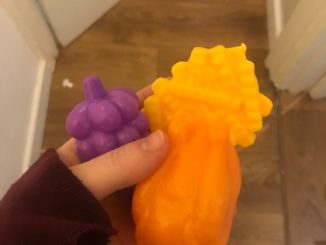I shared a post about parents asking “How do I get my child to…” and trying to get away from that language, which isn’t helpful for understanding what is going on for the child that they *can’t* do whatever the expectation is.
Someone in the comments wanted to know,
“What about a situation like allowing me to wash her hair? How do we bridge the gap where “I don’t want to” becomes physically detrimental?
This is a small child (2), not asking or expecting her to wash her own hair. I believe it’s sensory related and I hate the pediatrician advice to just “do it anyways and she’ll get over it”.
I want and need to meet her where she is to help her, but no one has advice beyond “she has to accept it”.
She gets severe, uncomfortable cradle cap so it isn’t an option to wait until she has the language/emotional skills to comprehend that I’m not torturing her.
My son had sensory issue with hair as well, but we kept it cut short and was easier to manage. She loves her “princess hair” and we can’t cut it like we did for him so I’m really in a stuck place. Feeling like she’s going to need therapy to recover from me washing her hair and I don’t know how to help her.”
Here is the answer that I gave:
There are LOTS of suggestions out there to try out. It will always be some measure of trial and error…if something truly can’t be put aside (i.e., medically necessary or health and safety measures), then that’s just the way it is, and we trust that our child expressing their emotion about it is not going to be traumatized, because children (and adults) go through scary things all the time and lean on an empathetic and confident loved one for help.
You can have empathy for how hard it is for her, and trial and error solutions, while also still knowing and holding in mind that water touching hair/head is not actually going to cause her bodily harm, of course.
And then you can try different things, like covering her eyes with different tools or visors or hats etc; trying out different ways of washing/wetting the hair, like running under the faucet vs in the shower with a detachable showerhead vs in the shower being held by you vs leaning back into the water; trying out different locations, like being in the shower vs bathtub vs sink or lying on the counter. If you googled or searched, there are hundreds of “sensory blogs” and the like that give “tips and tricks” kind of suggestions.
But it starts with a mindset shift. This is neither impossible nor is it just a matter of “give up and ignore your child”. And the goal is not to force her to be happy or even neutral about it. She’s allowed to hate it. It’s necessary, so it happens anyway. But how you approach it is what makes all the difference. You can be calm and confident and empathetic and trying out different things to find what works, without making her upset become your upset.



